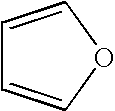Methods of determining ligand residue binding affinity
a technology of ligand residues and affinity, applied in the direction of instruments, materials analysis, molecular structures, etc., can solve the problem of difficulty in determining which of the minima is actually relevan
- Summary
- Abstract
- Description
- Claims
- Application Information
AI Technical Summary
Benefits of technology
Problems solved by technology
Method used
Image
Examples
example 1
[0069] The following data in Table 1 was generated from a simulation conducted according to the methods of the present invention on the protein Caspase-3. Amino acids are listed on the left hand side, while the fragments are listed at the top. The binding affinities associated with the fragment-residue pairs are listed.
TABLE 1Fragment Binding Affinity for Caspase-3tetra-acet-carbox-dimethylimida-iso-pyrimi-hydro-amideacetonebenzeneylic acidsulfoxideethanolzolebutanedinefuranureaH2OACE A 0000000000000ASN A 350−14.53000−19.1710−27.30700−12.976−22.5280SER A 36000000000000TYR A 37−21.0980−6.808000−21.307000−22.5280LYS A 3800−6.808000000000MET A 39000000000000ASP A 40000000000000TYR A 4100000000−12.472000PRO A 42000000000000GLU A 43000−17.5930−18.2330000−19.528−19MET A 44000000000000GLY A 45000000000000LEU A 4600000000000−18CYS A 47000000000000ILE A 48000000000000ILE A 49000000000000ILE A 50000000000000ASN A 51000000000000ASN A 52000000000000LYS A 53000000000000ASN A 54000000000000PHE ...
example 2
[0070] The following data in Table 2 was generated from a simulation conducted according to the methods of the present invention on the protein Caspase-8. Amino acids are listed on the left hand side, while the fragments are listed at the top. The binding affinities associated with the fragment-residue pairs are listed.
TABLE 2Fragment Binding Affinity for Caspase-8tetra-acet-carbox-dimethyliso-pyrimi-hydro-amideacetonebenzeneylic acidsulfoxideethanolimidazolebutanedinefuranureaH2OACE A 0−27.098−8.53000−11.1710−14.30700−6.976−22.528−17ASP A 223−27.098−20.530−3.808−12.593−22.171−13.233−30.3070−14.472−11.976−22.528−17LYS A 224−27.098−20.530−3.808−12.593−22.171−14.233−30.3070−14.472−11.976−22.528−16VAL A 225−13.098−11.530−4.808−12.593−15.171−10.2330−2.330−9.472−9.976−19.5280TYR A 226−26.098−21.530−4.808−10.593−26.171−16.233−20.307−2.330−11.472−11.976−20.528−11GLN A 227−26.098−21.530−4.808−10.593−26.171−11.233−20.307−2.330−11.472−11.976−20.528−11MET A 228−13.098−12.5300−10.593−18.1710−...
PUM
| Property | Measurement | Unit |
|---|---|---|
| affinity | aaaaa | aaaaa |
| interaction energy | aaaaa | aaaaa |
| threshold distance | aaaaa | aaaaa |
Abstract
Description
Claims
Application Information
 Login to View More
Login to View More - R&D
- Intellectual Property
- Life Sciences
- Materials
- Tech Scout
- Unparalleled Data Quality
- Higher Quality Content
- 60% Fewer Hallucinations
Browse by: Latest US Patents, China's latest patents, Technical Efficacy Thesaurus, Application Domain, Technology Topic, Popular Technical Reports.
© 2025 PatSnap. All rights reserved.Legal|Privacy policy|Modern Slavery Act Transparency Statement|Sitemap|About US| Contact US: help@patsnap.com



